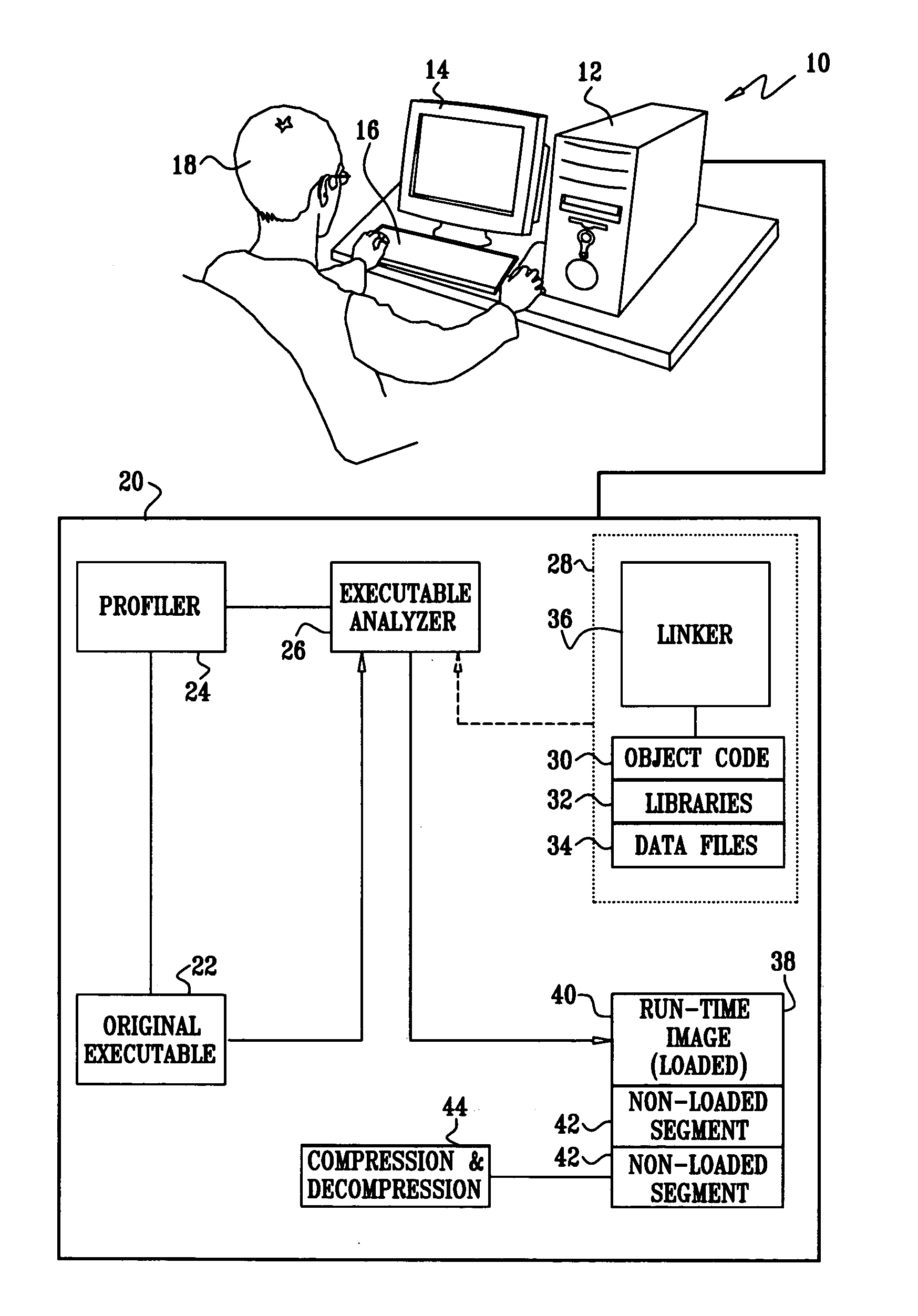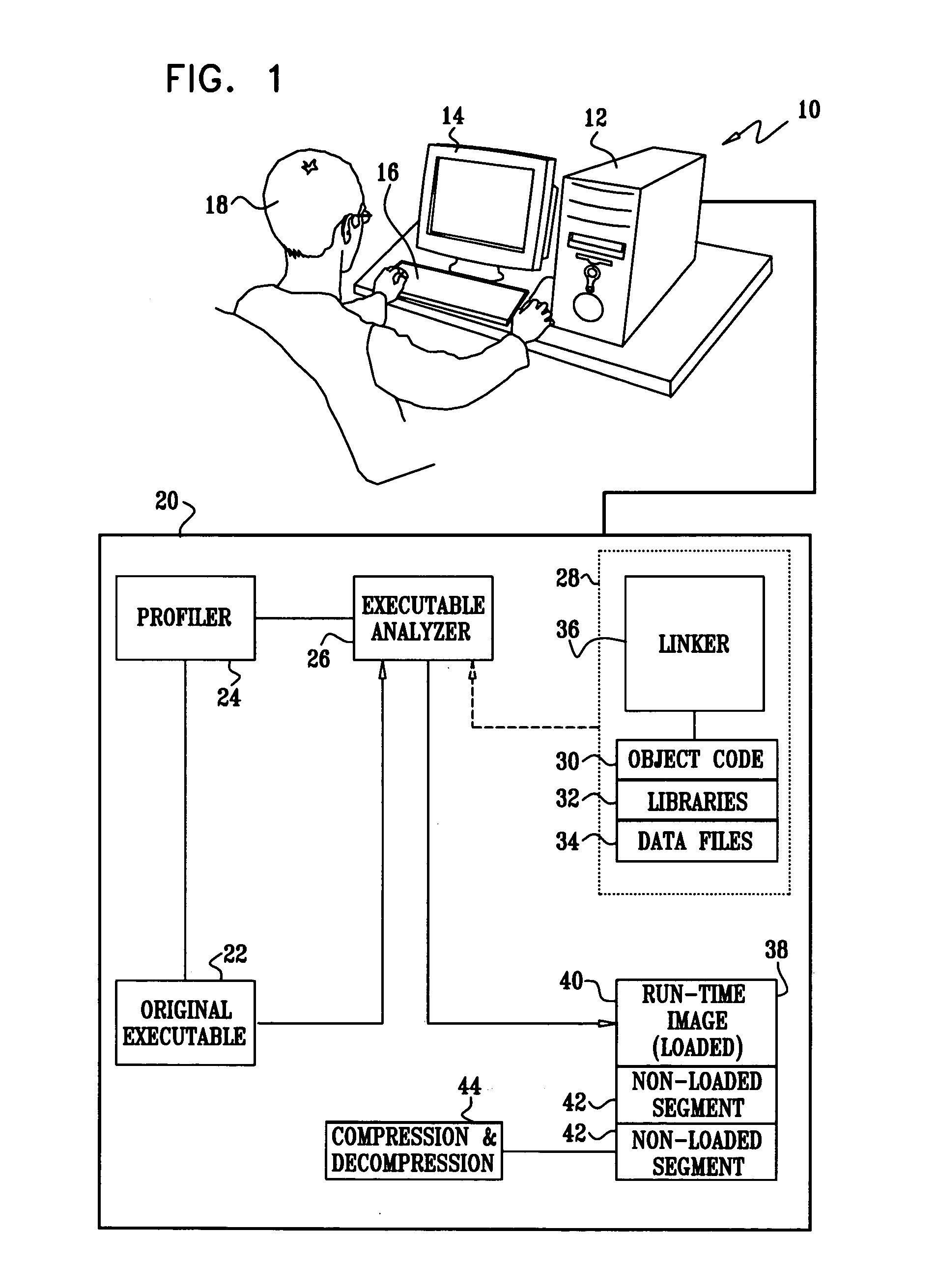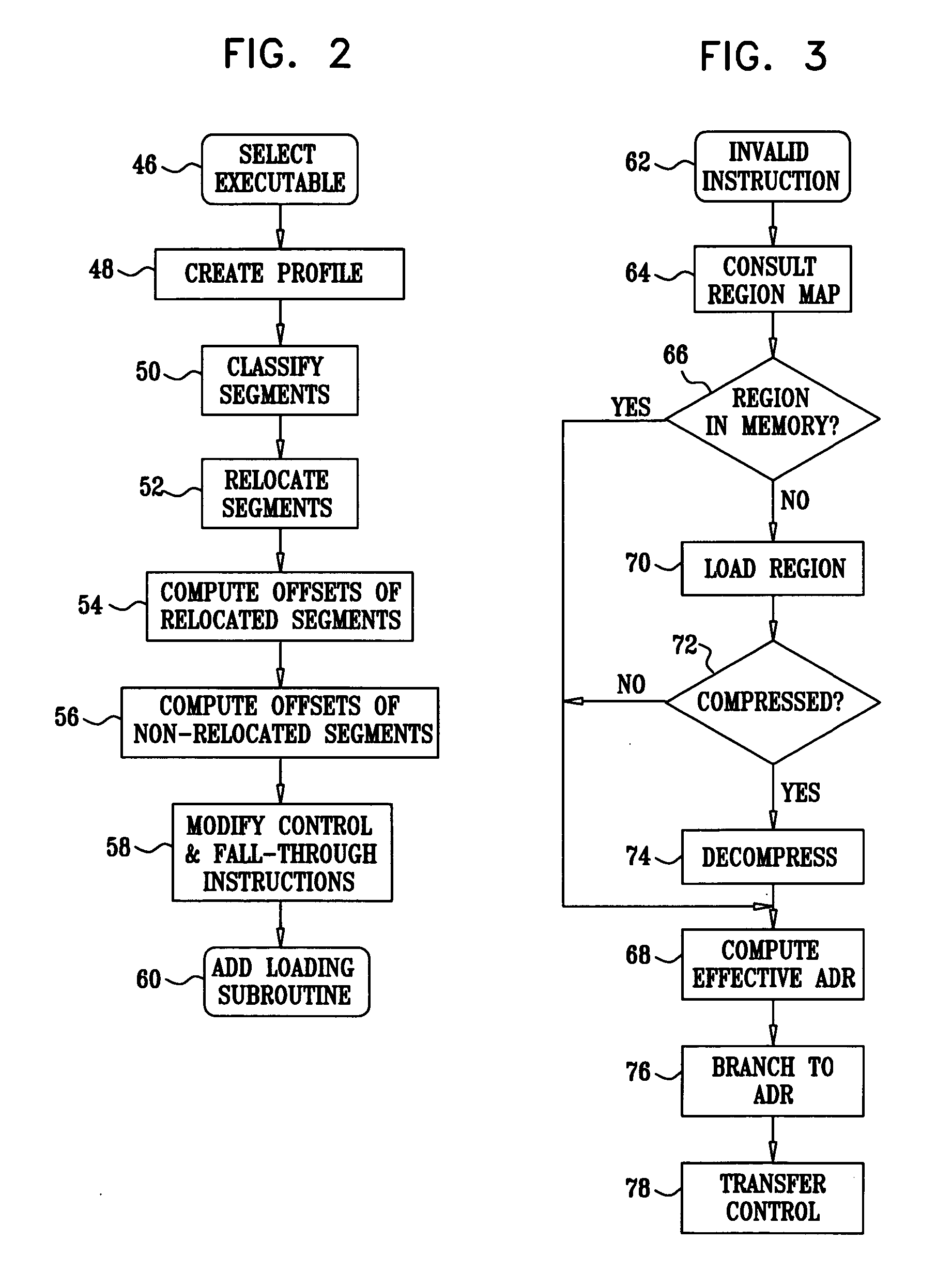Link-time profile-based method for reducing run-time image of executables
a run-time image and profile technology, applied in the field of computer software programs, can solve the problems of degrading affecting the performance of the program, and the size of the run-time image of the executable and library, so as to improve the code and data locality, improve the performance, and reduce the run-time image.
- Summary
- Abstract
- Description
- Claims
- Application Information
AI Technical Summary
Benefits of technology
Problems solved by technology
Method used
Image
Examples
embodiment 1
Alternate Embodiment 1
[0161] Referring again to FIG. 2 and FIG. 8, step 52 (FIG. 2) and step 112 (FIG. 8) may be modified to relocate cold segments and data. However, in the case of relocating cold code to a non-loading section, the trapping mechanism described above, which results in branching between the original code and the relocated code, may cause significant performance degradation. In order to reduce the associated performance overhead, it is recommended that the loading module, after having loaded the appropriate relocated area, modify the triggering invalid instruction so as to access the promoted relocated area directly. If a single instruction is insufficient to access the target, the modified instruction can either call an access stub that references a map that associates calling addresses to accessed targets. Alternatively, a branch can be taken to a dynamically created trampoline for each instruction, which enables the desired access.
embodiment 2
Alternate Embodiment 2
[0162] The loading subroutine operates as described above, but is now activated by a separate process or thread. Advantageously, the system can now speculatively load the relocated cold code or data ahead of time, thus preventing the program from waiting until the relevant code or data is loaded into memory when actually needed.
example 1
[0163] In the following example, the inventive technique was applied using a post-link optimization tool known as called feedback directed program restructuring (FDPR). Details of this tool are described in References 1 and 2. FDPR is part of the IBM AIX® operating system for pSeries® servers. FDPR was also used to collect the profile information for the optimizations presented below. Two benchmark suites, CINT2000 and CFP2000 were analyzed to show the percentage of frozen code and data they possess. These two CPU2000® suites are described in Reference 33. They are primarily used to measure workstation performance, but were actually intended by their creator, the Standard Performance Evaluation Council (SPEC®), to run on a broad range of hardware. They are intended to provide a comparative measure of compute-intensive performance across the widest practical range of hardware, including limited resource devices.
[0164] It is believed that the types of applications presented in the CP...
PUM
 Login to View More
Login to View More Abstract
Description
Claims
Application Information
 Login to View More
Login to View More - R&D
- Intellectual Property
- Life Sciences
- Materials
- Tech Scout
- Unparalleled Data Quality
- Higher Quality Content
- 60% Fewer Hallucinations
Browse by: Latest US Patents, China's latest patents, Technical Efficacy Thesaurus, Application Domain, Technology Topic, Popular Technical Reports.
© 2025 PatSnap. All rights reserved.Legal|Privacy policy|Modern Slavery Act Transparency Statement|Sitemap|About US| Contact US: help@patsnap.com



